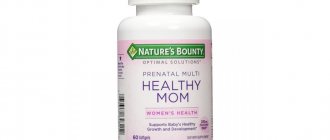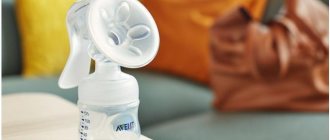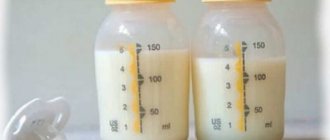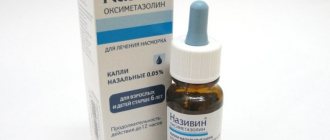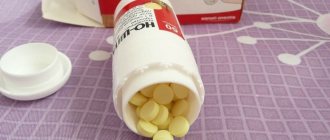There is still an opinion in society that breastfeeding women need to lead an almost ascetic lifestyle. Many people believe that familiar things can harm a baby. There are so many myths regarding breastfeeding mothers: a woman should not sleep on her stomach, play sports, she should eat dietary products, drink a lot of black tea with milk to improve lactation. Breastfeeding experts agreed to comment on the most common myths that concern breastfeeding mothers.
The status of “young mother” obliges you to lead a certain lifestyle
Indeed, a nursing woman should not drink alcohol, smoke, or take medications that cannot be combined with breastfeeding. Also, a young mother who is breastfeeding her baby should not overexert herself, engage in heavy physical work, or be very nervous and worried. With these prohibitions everything is obvious. A woman who leads a familiar (not entirely healthy) lifestyle should stop breastfeeding and switch the baby to an adapted formula.
But there are mythical prohibitions that have no scientific basis and are often devoid of any logic. It also happens the other way around, when a nursing woman does something that in her position should not be done. There have always been a lot of rumors and speculation around breastfeeding. Let's try to figure out the most popular prohibitions.
How can you introduce supplementary food?
It is not for nothing that a newborn is placed on the mother’s breast immediately after birth. Firstly, he must smell and taste milk, and secondly, the baby must properly develop a sucking reflex so that in the future there will be no problems with latching on to the nipple. In this regard, several input methods are used, the main of which are:
Bottle with nipple
This is the option that doctors least often recommend using. Since the nipple on the bottle is much easier for the baby to suck on, there are great fears that in the future the baby will be lazy and will not latch on to the breast. In addition, when sucking a pacifier, the child opens his mouth much less than when grasping the peripapillary area of the mother's breast. After this method of feeding during breastfeeding, problems arise with improper latching on the breast. This, in turn, leads to complications for the female breast, cracks or mastitis.
At the same time, the ease of sucking a bottle also lies in the fact that milk may flow unevenly from the breast, the mother’s nipples may be irregularly shaped, but the same stream always flows from the bottle, without requiring special force. If the baby gets used to drinking milk from a bottle, the mother will have to constantly pump, which is not a very pleasant procedure and soon the mother will be forced to completely switch to artificial feeding, thereby depriving the baby of all the most useful and necessary things.
spoon
Introducing complementary foods with a spoon is much safer for the preservation of breastfeeding, but requires some skill. At first, some of the liquid will flow past, but over time the mother will get used to this method. With this additional feeding, it is worth placing the spoon approximately to the middle of the tongue or behind the cheek so that the child does not spit out the food. If the maternity hospital where the birth takes place is focused on natural feeding, then most likely the young mother will be able to easily teach how to administer liquid from a spoon. Because with quick and confident movements you can achieve success and soon not spill a drop. In addition, a spoon is always an accessible tool for feeding, and if supplementary feeding is temporarily introduced, the newborn can easily return to the breast.
Supplementary feeding from a syringe or pipette is a common and fairly safe method of supplementary feeding for maintaining lactation.
Syringe or pipette
The use of a syringe for supplemental feeding is also widely practiced in maternity hospitals. In this case, there are several feeding techniques, for example, you can insert a syringe into the baby’s cheek, apply pressure and deliver milk into the mouth. Or let him suck his finger, and at the same time gently squirt milk from a syringe into the corner of his mouth. The syringe for this technology can be used in different volumes, depending on age. If the baby is a newborn, then the volume of the mixture consumed is suitable for a pipette. You can use it, but if the baby is already older, then feeding from a pipette will take too long. There are cases when the baby completely refuses to eat, then after trying all feeding methods, the mother returns to supplementary feeding from a pipette.
Cup
With this method, you can use any cup, it is better if it has thin edges, like for coffee. Supplemental feeding from a cup or shot glass is recommended even for premature babies, although babies born at the wrong time may find it a little more difficult to get used to eating this way. If we consider the feeding process step by step, then first you need to carefully hold the baby's head, then apply the edge of the cup to the lower lip. Allow your mouth to come into contact with the liquid - do not pour it down your throat. The child will lap up the drink with his tongue, and the cup should be kept in the same position as possible to make it easier for the baby to swallow. This method also requires experience, but after a few feedings the mother’s uncertainty will recede, and the process itself will go faster and more confidently. Since the liquid will spill a little, you can pour a little more than the required portion into the cup. Then the child himself will stop lapping up the drink as soon as he is full.
sns system
It stands for “additional feeding system” and looks like a special device with a tube attached to the mother’s chest. This device ideally preserves the relationship between mother and baby. Using sns, the baby not only receives mother's milk along with supplementary feeding, but also additionally stimulates the mammary glands. And also immediately learns to suck the breast, not from third-party objects. For a woman, such a system also does not cause unnecessary worries - you can use the container for formula or milk several times, washing and treating it after the next feeding. The reservoir itself can be placed directly on the chest, and every woman can use it, even with the lowest lactation.
The sns system is the most modern way of supplementary feeding, possible for a nursing mother with any level of lactation.
A nursing mother should not sleep on her stomach
One of the most common myths is that a nursing woman is strictly forbidden to sleep on her stomach. This position can lead to congestion in the mammary glands and their inflammation.
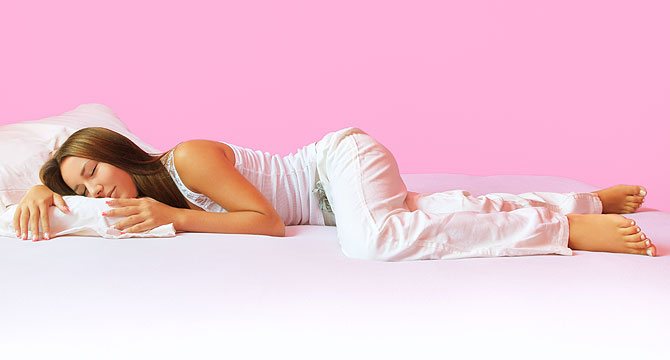
In fact, a breastfeeding expert says it's okay to sleep on your stomach. It is better to remove your bra at night to avoid squeezing the milk ducts. It is also advisable to change sleeping positions, otherwise there is a real risk of developing lactostasis. This is especially true for women with large breasts.
How to do it right
Mastering the breastfeeding technique is simple in theory. But it’s not easy to apply the acquired knowledge right away. But even in this case, mom absolutely must not despair and give up - a lot depends on her perseverance and positive attitude!
First of all, decide on the position. You can feed while lying down, sitting/half-sitting, standing (after an episiotomy, for example). When choosing a position, keep in mind that the baby can suckle at the breast for quite a long time, which means the mother should have the opportunity to relax and spend time in comfort.
It is important to place a newborn for feeding while lying down in such a way that the mother lies flat (her head is not raised on a bent arm), and the baby’s mouth is at the same level as the nipple. Otherwise, it will pull on the chest, causing cracks and microtraumas.
Lying on her side, the mother holds the baby by the butt and back, holding him close to her.
You shouldn’t fix the baby’s head, at most you can direct it towards the chest at the very beginning, and then the baby should be able to move it freely.
Many mothers worry that it will be difficult for the child to breathe because the nose rests on the chest. In fact, he feels completely comfortable in this position, receiving enough air through the edges of the spout. By pressing the breast from above with her fingers in order to help the baby breathe, the mother only makes it more difficult for him, because this impairs the flow of milk.
The remaining rules can be grouped as follows:
- correct application. Every child from the first seconds of life reflexively seeks the breast - this is an innate unconditioned reflex. To make the task easier for him, at first you can help a little - point the head towards the chest, move part of the areola along the lips. In response, the baby's mouth will open wide and he will be able to latch onto the breast correctly. At the same time, its lower lip will turn slightly outward and capture the lower edge of the areola. By the way, not all of it ends up in the child’s mouth - the lower part is larger than the upper. This type of grip is also known as an asymmetrical attachment - because the areola is not grabbed symmetrically.
- correct sucking. During the process, the mother can see part of the baby’s tongue covering the lower gum and sponge. It is the tongue and lower jaw that actively stimulate the milk ducts and “squeeze out” the milk. The cheeks move in rhythm with the sucking, the baby swallows deeply. The nose and chin are pressed tightly to the chest.
Mothers are often advised to feed their baby naked and undress to the waist themselves. Skin-to-skin contact ensures the development of the strongest bond between mother and baby.
Don't skip feedings
When it comes to a young, nursing mother, the image of a tortured, sleepy woman often comes to mind, with a child hanging on her chest for days. Many mothers consciously choose this lifestyle after childbirth. They do not part with the baby even for a second and are ready to immediately come running at the first call. But modern women are increasingly inclined to an active lifestyle: they get education, relax, and do fitness. At the same time, they want to continue breastfeeding. How to combine your desires and the needs of your baby?

The expert draws attention to the fact that a nursing mother is a living person who may have her own desires. This is not a “dairy farm” that is always open and only works for one baby. A woman who improves herself, goes to advanced training courses, works, visits a theater or restaurant, does not become a worse mother for her child. If you express milk correctly, freeze it and ask your grandmother or nanny to feed your baby on time, there will be no problems. The baby will be well-fed, and the young mother will be able to go about her business without remorse.
Feeding lying down
The lying position is convenient for night feeding. In the first months there should be several of them, since at night there is an active production of hormones responsible for lactation, and, accordingly, milk remains in large volumes. At the same time, doctors advise young mothers not to allow more than 4 hours between nightly breastfeeding. If the baby is sleeping, there is no need to wake him up, just lie down next to him and offer him the breast. From his mother's warmth and smell, he will take the breast himself. The faces of the baby and mother should be directed towards each other.
On the side
The woman places her head on the pillow or supports it with a bent arm. The baby's head is placed on the soft part of the arm bent at the elbow. With the second hand, it is convenient for the mother to support the baby, stroke his back or additionally stimulate the breast. The baby should also lie on its side so that its body is not twisted in the neck area. To do this, a soft foam cushion is often placed under the baby's back so that he does not accidentally turn onto his back.
In this position, a woman can give both glands to the baby in one feeding. To do this, she just needs to slightly change the degree of her posture and bend over the child a little.
On the hand
The woman lies on her side and places the baby next to her so that their tummies touch. The mother can put her head on the pillow, but her shoulders should be down on the bed. The baby's head is placed on one (lower) hand. If a woman's back is uncomfortable, a pillow can be used. In this position, milk is best released from the lower part of the mammary gland.
Using a baby pillow
The pillow is used in place of the woman's hand, she does not need to hold the baby, while the baby is still comfortable breastfeeding. To do this, place a pillow on the bed, and the mother lies down next to it, sideways. The baby is placed on top of the pillow on its side, facing the woman. In this position it is convenient to feed from the upper mammary gland. In this case, the pillow should lie as close to the woman as possible, and the baby should press his tummy to his mother. The breast is placed in the baby's mouth and fed.

A special feeding pillow makes this process easier not only for the baby, but also for the mother.
Woman using a pillow
This position helps the mother with problems with milk stagnation on the sides of the mammary glands. The woman lies on her side and puts a pillow under her head. At the same time, her body seems to move forward and it turns out that it is more convenient to feed with the upper breast. The baby is placed next to him, on his side. The breast is given to the baby, holding him behind his back. The main thing is that in this position only the mother’s head should lie on the pillow, her shoulders should be on the bed, otherwise the baby will have to forcefully reach for the nipple.
Jack
The optimal position for relieving a woman’s breasts during lactostasis if the milk stagnates in the upper ducts. In this case, the legs of the mother and baby are in the opposite direction from each other. This position is considered comfortable for the baby; he completely sucks the milk from the breast.
Overhanging
In this position, milk is best released from the center of the breast or its lower part. For the baby, this position is considered optimal if he himself cannot completely empty his mother’s breast. For example, if the child has already gotten used to the bottle or is very weak after childbirth.
This feeding takes place on the bed or on the table. The baby lies on the surface, and the mother sits down next to her on all fours or sits down on a chair (if she is feeding the baby on the table) so that the baby’s body is perpendicular to her. The baby's head can be turned slightly towards the mother. The woman directs her breast into the baby's mouth.

One use of the hanging position is feeding a baby in a car seat.
Do not feed milk while sick
It is impossible to remain absolutely healthy for 1-2 years. A nursing mother can catch a cold, get sick, or overheat in the sun. Many young mothers sincerely believe that if they feel unwell, it is forbidden to breastfeed their child.
Experts say that it is possible for a woman to breastfeed when her temperature rises. There is scientific evidence that even if a mother gets the flu, her milk will contain strong immunoglobulins that will suppress the dangerous virus in the diet. The body of a nursing woman, long before she feels the first symptoms of the disease, sends signals to the brain. Breast milk will already contain powerful substances that protect the immune system. Therefore, if your temperature rises, you should not stop breastfeeding. Experts, on the contrary, recommend putting the baby to the breast more often in order to protect him from ARVI or flu during the peak of the disease.

When do they start supplementing?
With the introduction of formula, the baby switches to a mixed type of nutrition (breast and formula). There are some indications for introducing supplementary feeding:
- A slight weight gain in the baby, or vice versa - the newborn loses weight.
- If the baby was born prematurely.
- Illness of a nursing woman or taking strong medications that prevents breastfeeding.
- Inability to continue breastfeeding due to work or long-term absence of the mother.
- Problems with lactation, when the mother’s milk simply disappears.
Whether or not to supplement feeding is usually determined by the weight of the baby. During the first month of life, a child should gain an average of 600 grams; in subsequent months, the norm increases. But these figures are very arbitrary, since each baby develops in its own way. Every woman reacts differently to stressful situations, poor diet or illness. One mother is able to feed her baby for more than a year, while the second mother runs out of milk already in the third month, if not earlier. In these cases, mothers also try to give the baby formula, seeing that he is not getting enough. But you should not immediately introduce supplementary feeding; it is better to do everything possible to maintain and prolong lactation (how to increase lactation for a nursing mother can be found here).
Or it is used for a longer period of time, but alternating with natural feeding, if the mother does not despair and tries to establish breast milk production. Because of this, it is recommended to introduce additional nutrition only after consultation with a doctor, who will give clear recommendations regarding feeding for each individual infant.
It is forbidden to treat the breast skin with cosmetics
During lactation, the skin on the chest especially needs careful care. But, on the other hand, mothers are afraid that the baby will lick the cream or serum and get poisoned. Many women choose the health of their baby, and firm, well-groomed breasts remain a thing of the past.
What do experts advise? Cosmetics can really be dangerous to a baby's health. Because creams, ointments and gels cannot pass into breast milk, there is a risk that your baby will lick them off during feeding. If a young mother makes sure that breast care products do not get on the areola and nipple, the baby will not be able to swallow them. This means that it is not only possible, but also necessary to take care of the skin of your breasts if you want your bust to please you (and your husband) with beauty and elasticity after breastfeeding.
Breast care during feeding
As soon as labor is over, the woman begins to feel a strong flow of milk, the mammary glands swell and therefore need support.
There are certain hygiene and rules:
- Be sure to choose a comfortable, high-quality bra. It should be soft, elastic, without hard rings and with wide straps. Such underwear will help avoid stretch marks, protect the breasts from injury, improve blood circulation and milk production, and also reduce the load on the spine. It is necessary to have at least two suitable bras for changing and special cotton pads for the nipples. You can make them yourself from a sterile bandage; just fold it into 10 small layers.
- During breastfeeding, blood circulation in the mammary glands should be maximized. A daily contrast shower and proper breast massage will help with this. Holding your chest under running water, you need to gently knead it, moving clockwise, then alternately switch the water, making it either warm or cool. After a shower, you need to thoroughly dry your breasts with a terry towel, starting from the armpit to the nipple.
- After giving birth, it is important to limit your drinking. If milk accumulates, you need to express your breasts after each latch - how to express your breasts correctly. To prevent your breasts from bursting, you can use some folk methods, for example, putting a hard compress of honey, flour and boiled water on the mammary gland.
- There are special gymnastics for breast elasticity. Each exercise must be repeated about twenty times.
Here are some exercises:
- In front of your chest, clasp your hands with your palms together, as if you were praying, then literally for a couple of seconds you should squeeze your palms as tightly as possible, and then relax them.
- The next exercise involves standing straight with your hands on your waist. Then you need to slowly rise on your toes and at the same time move your elbows back as far as possible.
- Do push-ups from a chair or the floor.
Air baths for the chest
To keep the mammary glands in perfect condition while breastfeeding, you can use air baths. Such baths help relax the muscles, the chest receives enough oxygen and begins to “breathe” freely. Air baths are taken in this way: in the cold season, it will be enough to ventilate your room, and then sit in this room for about ten minutes with your chest open. If it’s warm outside, you can simply sit by the open window with your chest bare.
However, each process requires caution and air baths are no exception. The main thing when conducting the next session is not to get too cold and to protect your mammary glands from direct sunlight. If these requirements are not met, then there is a possibility of microcracks forming in the nipples. When breastfeeding, these cracks will only increase and will bring such pain to the mother that subsequently she will have to completely give up breastfeeding - how to deal with cracked nipples.
To read: If it is painful for you to feed your baby due to cracks, then use special pads, which we wrote about here -
So, in order for a mother to feed her baby healthy breast milk for as long as possible after giving birth, proper breast care is simply necessary.
Avoid animal products
Those who oppose vegetarianism urge nursing mothers to “come to their senses” and start eating meat and fish. Otherwise, milk will not contain all the beneficial substances that are vital for a baby.

Of course, the human body cannot do without protein. Essential amino acids are not produced in the body, but come from animal products. Plant foods also contain amino acids, but they are not enough for full development and growth. If a nursing mother eats milk, fish, seafood, and eggs, her milk will be saturated with all the necessary amino acids. If a woman practices vegetarianism, she must learn how to properly combine plant foods in her diet so that the body receives all the necessary substances.
But it is worth noting that only experienced vegans and vegetarians can develop a full menu while avoiding animal products. If a woman decides to stop eating meat, fish, and dairy products while breastfeeding, doctors recommend not to do this so as not to deprive the baby of essential vitamins and microelements.
Common problems
The chances of problems occurring are especially high in the first days after birth. New mothers especially often suffer from lactostasis.
This condition is characterized by:
- Breast swelling.
- Soreness and the appearance of compactions.
- Increased body temperature.
In the period immediately after birth, breast milk is produced very quickly, the baby does not have time to suck it out and it begins to stagnate. Stale milk creates favorable conditions for the proliferation of pathogenic microorganisms, so the problem must be addressed urgently.
Lactostasis can lead to the development of mastitis, so after the slightest discomfort occurs, it is necessary to take action.
To eliminate milk stagnation you need to:
- If lumps appear, massage your breasts in a circular motion.
- Express the remaining milk until the discomfort disappears.
To solve the problem of lactostasis during breastfeeding, it is recommended to use traditional methods. You can apply a cabbage leaf to the mammary gland, make a honey cake, apply grated beets, sour cottage cheese. There are a lot of compress recipes. Before using them, you should definitely consult a doctor, since some recipes bring questionable benefits and can even be harmful and contribute to the development of mastitis.
Also, during breastfeeding, women are often bothered by cracked nipples. Proper care and attachment of the baby will help avoid this problem. Their danger is that infections can enter the body. After the slightest cracks appear, the nipples must be regularly treated with medicinal agents, for example, bepanthen.
There are several reasons why cracks occur during breastfeeding:
- Violation of the technique of attaching the baby to the breast.
- Washing the mammary glands with soap.
- Treatment of the breast with alcohol-containing substances.
To prevent cracks from appearing, it is necessary to treat the nipple with milk after each feeding. Milk contains useful substances that will prevent the occurrence of cracks, and if they exist, accelerate healing. It is also recommended to lubricate nipples with creams containing lanolin for prevention. Such medications do not need to be washed off. It is not advisable to use other creams. It is not recommended to lubricate nipples with natural antiseptics such as aloe juice or beeswax oil, as their smell may make the baby not want to breastfeed.
If all lubrication does not help and the cracks do not go away within a week, breastfeeding should be stopped. The baby can eat from one breast, but if this does not happen, you can express milk from the sore breast and spoon-feed the baby.
After some time, you can continue feeding the affected breast, but give the healthy one first. If both mammary glands are affected, then it is necessary to express and spoon feed the baby. It is not recommended to give a bottle, as the baby may then stop breastfeeding.
During treatment of cracks, in order to continue breastfeeding, you can purchase special silicone pads. They will protect you from painful sensations. But it will be difficult for the baby to suck milk through them.
If milk constantly leaks from the breast, then care should include the use of pads. This will avoid excess moisture.
If the nipple is constantly wet, then the chances of cracking increase significantly. Some people believe that you need to lubricate your nipples with brilliant green to get rid of cracks. This is absolutely impossible to do; it can make the problem even worse. The skin on the nipples is very delicate and thin, so it is permissible to use only special products.
It is advisable to treat cracked nipples after consulting a doctor. He can select the most suitable means for a particular case. Cracks usually appear in the first days of breastfeeding. Gradually, the skin of the nipples becomes rougher and is no longer injured as easily. Previously, it was a common belief that during pregnancy the breasts should be hardened and the nipples should be wiped with a terry towel to make feeding easier later. But the effectiveness of such methods has not been proven.
The problem of milk leakage during feeding also occurs frequently.
To get rid of this problem, you need to:
- Breastfeed as often as possible, rather than on a schedule.
- If there is a lot of milk and the baby cannot suck it out completely, it is necessary to express it manually or with a breast pump.
- Use bra pads, but make sure they are of high quality and do not cause skin irritation.
Is it possible to feed a baby if menstruation has begun?
Many women begin menstruation while breastfeeding. There is a myth that during this period milk becomes tasteless, so it is better to stop breastfeeding. In addition, many people think that a woman’s hormonal background changes with the onset of menstruation, and this can harm the baby’s health.

What is happening in reality? As a result of the research, scientists came to the conclusion that the quality and taste of milk does not change with the onset of menstruation in a woman. The baby may indeed behave restlessly during feeding, but this happens because the mother's breasts become denser, and it is difficult for the baby to suck out milk. Therefore, if a nursing woman begins menstruation, this is not a reason to urgently stop breastfeeding and switch the baby to formula.
Rules for attaching a baby to the breast
Breast milk is the main source of energy and vitamins for a child up to six months of age. It ensures good digestion, proper development, growth, and formation of the immune system. WHO recommends breastfeeding a healthy newborn within the first half hour of birth. The baby is placed on the mother's stomach. Close contact is required for an hour.
When feeding your baby, you should adhere to a number of rules:

- Before offering your baby the breast, you need to express a few drops of milk. This is useful to do in order to remove bacteria that easily enter the peripheral parts of the gland ducts;
- It is recommended to wash your breasts with soap as little as possible. Frequent use of hygiene products leads to the removal of sebaceous lubricant from the surface of the areola and nipples. This promotes the formation of cracks;
- After finishing feeding, the breasts should be wiped with a soft, clean cloth. This is required to prevent maceration of the areola;
- choose a feeding position that is comfortable for the baby and mother;
- alternate feeding from the right and left breasts. This is useful to do to prevent stagnation of milk in the glands;
- Feeding on average should last about 15-20 minutes. Newborns should be placed on the breast for 30-40 minutes. Healthy babies regulate their own feeding times.
It is also important to follow the technique of applying the baby to the breast, the main points of the baby’s position:
- the torso and head are on the same line. Violation of this requirement leads to the fact that it will be difficult for the baby to suck and swallow milk;
- The baby's face is turned to the mother's breast. The nose is located opposite the nipple;
- maintaining a small distance between mother and child to ensure eye contact;
- The baby's belly is pressed against the woman's belly.

The following signs indicate that a woman is putting her baby to her breast correctly:
- the baby's mouth is wide open;
- the chin touches the chest;
- lower lip turned out;
- The baby captures most of the areola with his mouth;
- the baby's cheeks are rounded;
- the baby can be heard swallowing milk;
- The woman does not experience pain, even if the baby suckles for a long time.
During feeding, it is necessary to support the entire body of the baby. This is especially important if the baby is underweight or was born prematurely.
A nursing mother should not exercise
If you actively engage in fitness, your body will produce lactic acid. Based on this, many believe that it is under no circumstances possible to combine breastfeeding and sports. After all, lactic acid can penetrate into milk, and it will change its composition and taste.
Doctors believe that moderate exercise does not have a negative impact on the quality of human milk. With reasonable loads, lactic acid does not have time to get into the milk, because within an hour after exercise it is eliminated from the body. The small amount of lactic acid that does penetrate into the milk does not affect its taste or quality.

It is better to schedule your workouts so that after they are completed, several hours pass before you feed your baby. Do not overexert yourself or engage in too active sports. Moderate exercise will help restore the body, give vigor and good mood, which are so necessary for a woman after childbirth.
Women are not allowed to go to the sauna or bathhouse.
Our mothers and grandmothers were sure that high temperatures would “warm up” the milk and it would become unsuitable for feeding. What do doctors say about this? Doctors assure that visiting a bathhouse or sauna does not in any way affect the quality and taste of milk. But a young mother needs to be careful if she plans to warm up in a bathhouse/sauna. It is necessary to take into account individual characteristics, the presence of chronic diseases and many other factors. In addition, dehydration occurs, and because of this, the milk ducts may become smaller. But if you drink a lot of liquid (water, herbal teas, fruit drinks), the water balance is quickly restored.
Visiting the steam room is contraindicated until postpartum discharge stops. It is also worth giving up a pleasant pleasure if the young mother had problems with the cardiovascular system before giving birth.

Rule seven: taking into account possible problems when feeding
There is no need to try to “stretch” the nipples before giving birth. Excessive stimulation will lead to increased uterine tone. Over time, an actively sucking baby will normalize everything.
- nipple cracks. The basis of prevention is proper breastfeeding. If cracks appear, use silicone pads. Make applications with lanolin ointment and Bepanthen as often as possible. If the cracks are deep and feeding is painful, use a breast pump;
- leakage of milk. Easily solved by using special inserts. They are disposable and reusable;
- There is a lot of milk, and the child is choking on it. Express some foremilk. When feeding, it will flow out under less pressure;
- engorgement of the mammary glands. Occurs when milk overflows. The breasts are painful, swollen, hot to the touch and very dense. Milk does not flow out of it. If this problem occurs, it is necessary to quickly remove milk from the breast. Latch your baby or express your baby more often. Take a warm shower before feeding. Give a light massage of the mammary glands. This will improve churn. To reduce swelling after feeding, apply a cold compress;
- lactostasis and mastitis. Occurs when the milk ducts are blocked. The body temperature rises, the chest hurts, the place of stagnation turns to stone. Pumping is painful. A warm shower, gentle breast massage and frequent feeding of the baby come to the rescue. When an infection occurs, antibiotics are required.
Infectious mastitis is a serious complication that requires medical intervention. Failure to apply may result in surgical intervention and even loss of the breast.
lactation crises. They develop at 3–6 weeks, 3–4 and 7–8 months of a child’s life. During these periods, the most important thing is to apply more often and be sure to feed the baby at night. Drink teas with lemon balm, fennel and cumin. Rest and eat well.
Feeding a baby with breast milk is a labor-intensive, but delightfully natural process. Remember this, and everything will work out.
When finishing breastfeeding, you need to bandage your breasts
Until now, young mothers, when they decide to stop breastfeeding, tighten their mammary glands for several days. Doctors categorically prohibit doing this, since milk will be produced with greater force, resulting in stagnation in the ducts. Tightening can also negatively affect the shape of the breast.
After giving birth, it is difficult for a woman to adapt to her new, very responsible status for some time. But the appearance of a beloved baby should not put an end to the life of a young mother. Fortunately, modern women can use the services of breastfeeding specialists who will explain what a nursing mother can and cannot do. Fitness classes, a balanced, varied diet, an active lifestyle - all this is possible with breastfeeding, and without compromising the health of the little person.
leave a comment
NEW LEVEL
The main concern of every mother is the health of her baby. But the desire for beauty has not been canceled either, and many expectant mothers are afraid of what will happen to their breasts as a result of feeding... We hasten to reassure and please: long-term feeding of the baby in itself affects the breasts for the better!
It is very important to remember that breast health improves as you breastfeed. An organ functions best when it works for its intended purpose! Therefore, when breastfeeding for longer than one and a half to two years, mastopathy often goes away or becomes significantly smaller, and the risk of developing breast cancer decreases literally with every month of feeding. But women are concerned not only with the content, but also with the form... So, what happens to the mammary gland during breastfeeding?
The shape of the breast begins to change during pregnancy. As you approach childbirth, glandular tissue develops more and more actively in the mammary gland, the function of which is to produce milk, and which partially replaces the adipose tissue that predominates in the breast at rest. And the physiological characteristics of the mammary gland are such that the adipose tissue holds its shape quite well, while the glandular tissue does not hold it at all. Breastfeeding breasts become engorged and at first look lifted and firm only due to the fact that the glandular tissue contains milk! As the baby grows, the reverse process gradually begins: when complementary feeding begins to play a noticeable role in the child’s nutrition and his need for breast milk begins to decrease, the glandular tissue “falls asleep,” gradually giving way to fatty tissue. The process is very slow, normally smoothly stretching over many months! If feeding ends too early, before the natural end of this process, the breasts until the next pregnancy will remain in the same state as they were at the end of lactation, that is, with a predominance of glandular tissue. Only, of course, not filled with milk, which means, alas, saggy... It turns out that thanks to this feature of the female body, after long-term feeding, the breasts can better retain their shape than if there was no feeding or it ended in the first six months of the baby’s life!
When breastfeeding a baby for a long time, the breast most often remains in approximately the same condition as it was when the child was one and a half to two years old - then, both at the end of feeding and when it continues, no cardinal changes occur. Sometimes, about a month or two after the complete end of feeding, the breasts “get better” by half their size, but more serious changes are unlikely to await you. Lactation consultants have seen cases where women who finished feeding their first child early and were worried, among other things, about the spoiled shape of their breasts, after the birth of their second baby and its successful long-term feeding, received a “miracle” in the form of “rising” breasts!
What do studies say about this? Evidence-based medicine around the world suggests not to be afraid to breastfeed! A group of Italian researchers decided to test whether adverse changes in breast size were associated with breastfeeding and surveyed 496 Italian women a year and a half after giving birth; Three out of every four (73%) reported that their breasts were different from before pregnancy - usually an increase in size and/or loss of firmness. When they checked which of these women were breastfeeding and which were not, it turned out that 75% of those who were breastfeeding and 69% of those who were not breastfeeding reported such changes. The duration of breastfeeding was not taken into account, but such close figures have already made it possible for researchers to say that these changes are not associated with breastfeeding (Pisacane, Continisio; Italian Work Group on Breastfeeding. 2004).
American plastic surgeons approached the issue much more carefully. Their study was conducted on 132 women who came to the University of Kentucky Department of Plastic Surgery with breast ptosis (sagging). Of those with at least one pregnancy, 85% reported adverse changes in breast shape, with 35% experiencing decreased breast size and 30% experiencing increased breast size. After carefully studying their histories, it was concluded that a history of breastfeeding, weight gain during pregnancy, and lack of regular exercise were not significant risk factors. What influenced the deterioration of breast shape? The determining risk factors were (in order of degree of decrease): age, significant weight loss (more than 20 kg), high body mass index, large bra cup size, number of pregnancies, and smoking (Rinker B, Veneracion, Walsh CP 2010).
By the way, plastic surgeons also actively encourage mothers who have had breast augmentation surgery to breastfeed and are worried whether breastfeeding will spoil the effect of the operation. Practicing surgeon Dr. Norma Cruz from the University of Puerto Rico observed 119 of her patients who had breast augmentation with implants and subsequently became pregnant. 57 of them breastfed their babies, and 62 did not, but when changes in breast size and degree of sagging were assessed a year after birth, they were the same for both breastfeeding and non-breastfeeding. As Professor Cruz stated, “ Breastfeeding is not a risk factor for breast sagging after plastic surgery—the changes that often occur after childbirth are a result of the pregnancy itself, not breastfeeding. And since breastfeeding is of great importance for the health of both mother and child, patients should definitely know about it .”
So breastfeed your babies and don't worry about maintaining breast shape - that's not something you really need to worry about!
Author Irina Ryukhova, photos of Olga Ermolaeva were used in the design of the article
Go to other interesting articles on breastfeeding for mothers
Our useful and interesting webinars for nursing mothers
